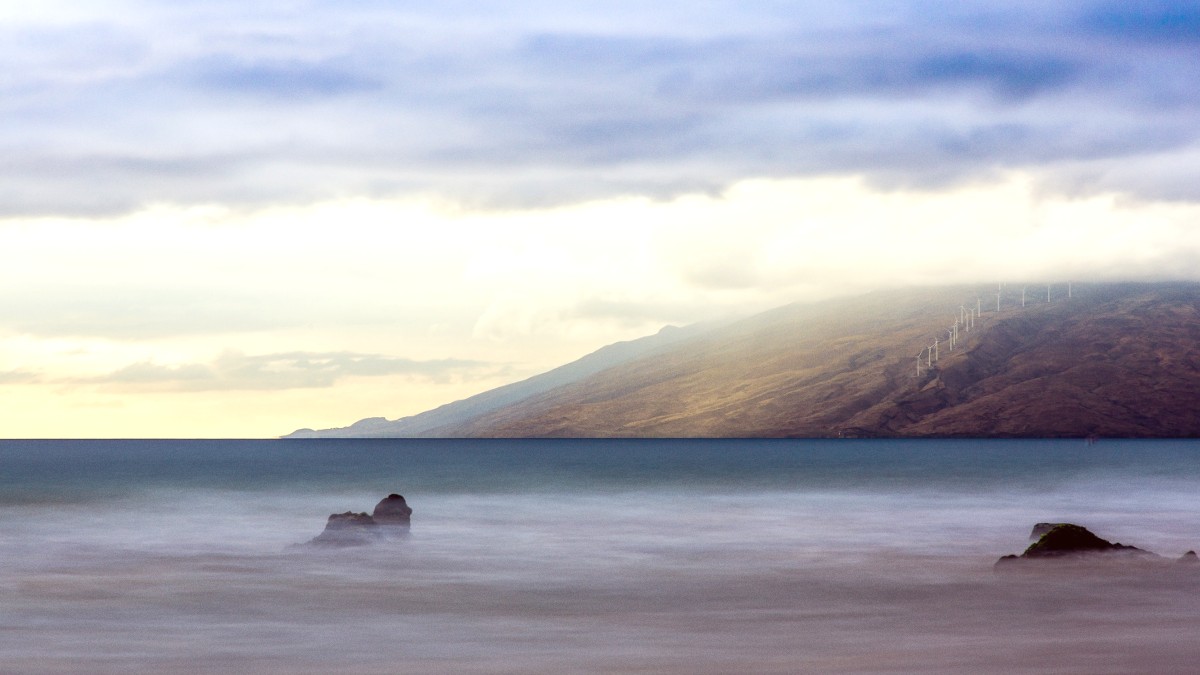
Hawaii, USA
Haleakalā National Park: Home to the dormant Haleakalā volcano. Its summit yields unmatched sunrise and sunset views. The park presents diverse ecosystems, from subalpine desert within the crater to lush rainforest in the Kipahulu District.
Lahaina Front Street: Previously a bustling center of shops, galleries, and restaurants. Current Status: The August 2023 wildfires profoundly changed Lahaina. Most of the historic district was lost. Access to affected areas restricts entry for recovery work. Visitors currently should avoid impacted Lahaina areas for tourism, supporting recovery and rebuilding. Consult official Maui tourism websites for current access and recovery details.
These institutions offer a deep dive into Maui's rich history and arts scene.
This scenic, winding highway (Hana Highway, Routes 36/360) runs along Maui's rugged east coast. It stands famous for lush rainforests, numerous waterfalls, and dramatic coastal views. It is not just a drive, but an experience.
No official fee for the drive itself, but some attractions along the way, like Waiʻanapanapa State Park, require advance reservations and entrance fees.
Start your journey early in the day to avoid crowds and have enough time. Dedicate a full day (10-12 hours) to complete the trip and enjoy the stops. Consider an Audio tour app, like GyPSy Guide or Shaka Guide, for narration and navigation tips. Drive cautiously; roads are narrow with many blind curves and one-lane bridges. Respect private property and "No Trespassing" signs.
Maui's natural beauty is a main attraction, from world-class beaches to stunning waterfalls and unique geological formations.
White sand, fronts many resorts, excellent for swimming and snorkeling (especially near Black Rock).
Upscale, golden sand, calm waters, popular for swimming and family enjoyment.
A large, undeveloped beach with powerful shore break. Exercise caution here.
A sheltered crescent beach. It stands excellent for snorkeling, even for beginners, with a Full face snorkel mask. It also suits families.
A long, sandy beach. It is popular for walking, sunbathing, and local recreation.
A world-renowned spot for windsurfing and kitesurfing. It also is a common resting place for green sea turtles, often seen on the shore in the late afternoon.
The Road to Hana features numerous waterfalls. Popular and accessible ones include Twin Falls, Upper Waikani Falls (also called Three Bears Falls), and Wailua Falls. Many pull-offs allow for viewing and short walks.
A scenic botanical garden on the Road to Hana. It offers stunning coastal and waterfall views, well-maintained gardens, and a variety of tropical plants. An entrance fee applies.
The southernmost point reachable by paved road on Maui. This area features stark lava fields, clear waters, and potential dolphin sightings.
Black Sand Beach (Honokalani Beach, Waiʻanapanapa State Park, Road to Hana): A unique black volcanic pebble beach with sea caves and blowholes. Requires advance reservation for parking and entry.
Beyond popular places, Maui keeps many lesser-known treasures that deliver unique experiences.
These spots offer a glimpse of Maui's less-traveled side.
Nakalele Blowhole: A natural blowhole that sends water high into the air. Use extreme caution here. Rogue waves are dangerous, and visitors must never approach too closely.
Beyond the main tourist shops, the plantation features tram tours that instruct about local agriculture, zip-lining, and a beautiful botanical garden.
A historic paniolo (Hawaiian cowboy) town. Makawao displays unique charm with art galleries, boutiques, and local eateries.
Kealia Pond National Wildlife Refuge: A useful wetland bird sanctuary. It features a boardwalk trail suitable for birdwatching, especially for migratory birds and endangered Hawaiian waterbirds.
The Road to Hana is a full-day adventure; plan accordingly for optimal enjoyment.
Begin your journey early in the day to avoid crowds and have enough time to enjoy the stops along the way.
Roads are narrow with many blind curves and one-lane bridges. Drive slowly and remain aware of local traffic.
For the Road to Hana, employ a navigation app with pre-downloaded maps; cell service can be intermittent.
A popular early stop with accessible waterfalls and fresh fruit stands.
Beautiful botanical gardens with stunning coastal views and waterfalls (entrance fee).
A scenic triple waterfall visible from the road; often a brief stop for photos.
Home to the famous Black Sand Beach (Honokalani). Requires advance reservation for parking and entry.
A remote, traditional Hawaiian community. Limited amenities but offers authentic cultural experiences.
Beyond Hana, the journey continues with further natural wonders.
While beautiful, the Road to Hana requires mindful travel.
Access to the most affected areas of Lahaina is restricted for recovery efforts. Visitors should avoid these areas for tourism.
Support West Maui by staying in open accommodations and patronizing businesses not directly affected by the fire.
Maui's varied landscapes offer an ideal playground for outdoor enthusiasts.
Explore diverse terrain from volcanic craters to lush rainforests.
Maui's waters offer a playground for all types of aquatic adventures.
For thrills and excitement, Maui presents several options.
Consider booking these in advance, especially during peak season.
Witness Maui's incredible marine life up close.
Always respect marine wildlife and their natural habitat.
Connect with Hawaiian culture through various interactive experiences.
These experiences offer a understanding of local traditions.
For popular tours like Molokini Crater snorkeling, whale watching, or Haleakalā sunrise, booking well in advance, especially during peak season, is highly suggested.
Utilize platforms like GetYourGuide for easy browsing and booking of a wide variety of activities and experiences.
Some tours offer flexible cancellation policies; always check the terms before confirming your booking.